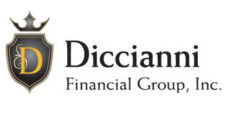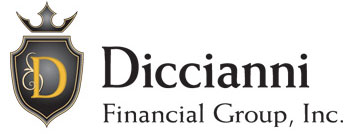When you are working hard to make your money grow through carefully chosen investments, you want to keep as much of the return on your investments as possible. There are three main factors that can erode your bottom line-or your rate of return. Let’s discuss the role that inflation, taxes, fees and transaction costs play in lowering your return and some ways to minimize them.
Nominal and Real Total Returns
The nominal rate of return is the selling price – the buying price + dividends. For example if you sell a stock for $4800.00 and buy it for $4000 the difference is a capital gain of $800.00 adding dividends of $80.00 will give you a nominal total return of $880.00 or 22%.
The real total return is reflective of the true net figure taking into consideration the income tax liability as well as the dividends and inflationary rate. In the example above the real total return would be 13%. You can see the 9% difference is significant.
Inflation
Although inflation has been low the last few years in the United States it remains a fact of life. There is no way to stop the effect that inflation has on everything. The best defense against inflation is to choose investments with a good prospect of delivering returns that are considerably higher than historical inflation rates. “Safe” investments like bonds, as we discussed in previous articles, will not hedge the effect of inflation as well as balanced or growth stocks. The risks are less but the return is also less.
Fees and Transaction Costs
There are a number of measures you can take to reduce this drain on your investments. First, you can become more aware of the transactions cost at non-discount brokerage houses. With the advent of the Internet you can transact your accounts directly with many wire houses. Remember that you will not get good advice this way so another method is to hire a fee based financial advisor (Contact us to learn more about how we can help). They charge you a fee for their service and invest with your best interests in mind.
As a long-term investor, you should not be engaged in constantly buying and selling stocks in response to changing stock prices. You should buy high-quality growth stocks and growth mutual funds and keep them for the long term. Holding some of these positions in your portfolio will enable you to minimize your transaction fees and costs.
Also being aware of the additional fees in mutual funds is vitally important to your bottom line. Many fund families are available with very low fees and will give you a great breadth of product line to choose from. These funds are often referred to as no-load or low load funds.
Taxes
Investment income is subject to federal income taxes at the same rate as other income. Interest and dividends are taxable income, and when you sell an investment for a higher price than you originally paid for it, you are subject to taxes on the capital gain. These accounts are the non-retirement accounts.
Tax-deferred retirement plans were established so that Americans could save money for retirement and take advantage of the savings and growth potential and defer the taxes until the time when your income is less. The tax savings and the power of compounding have afforded many Americans a comfortable retirement for the rest of their lives.
The other major tax benefit to these retirement plans is the deductibility from your income before your income taxes are assessed and the lowering of your salary that is subjected to taxes. Because of these tax benefits and because of a sharp decline in traditional company pension plans, tax-deferred retirement plans like the 401(k), 403(b) and 403(b-7) should play a central role in life-long investment strategies.
401(k) and 403(b-7) Plans-permit an individual to contribute a percentage of their earned income up to a current maximum limit of $20,500 (2022) and an over 50 catch up provision to a tax-deferred account. Typically the plans give an employee the choice of several investment options from bond funds, to growth funds all with a varying rate of return. Often times the employer contributes a certain percentage or “matches” what the employee puts in. The monies need to stay in these accounts until the age of 59 1/2, to avoid the 10% IRS penalty and the tax episodes that will result.
Individual IRA Accounts
These accounts are for workers who are not covered by an employer-sponsored retirement plan. The IRA is set up by an individual and allows that person to contribute $6000 for the year into a tax deferred account. The credit for this is taken on the income tax return by lowering the earned income.
There are exceptions to the 10% IRS penalty for first time home buying, and coverage of medical costs and college expenses, however utilizing your retirement savings should be done only as a last ditch effort.
Life Insurance Contracts: Tax Deferred
In addition to tax-deferred retirement plans, people may purchase annuity contracts and certain types of life insurance contracts with tax deferral feature.
The keys to smart life-long investing is to always try to outperform inflation, hold down investment costs and fees, and lower the amount of earned income subject to taxation. Another key element of investing is to diligently save a certain amount every month.
Happy investing and take full advantage of your company sponsored retirement plan.
Contact us to learn how we can help you look at the big picture and formulate a customized plan for you.

